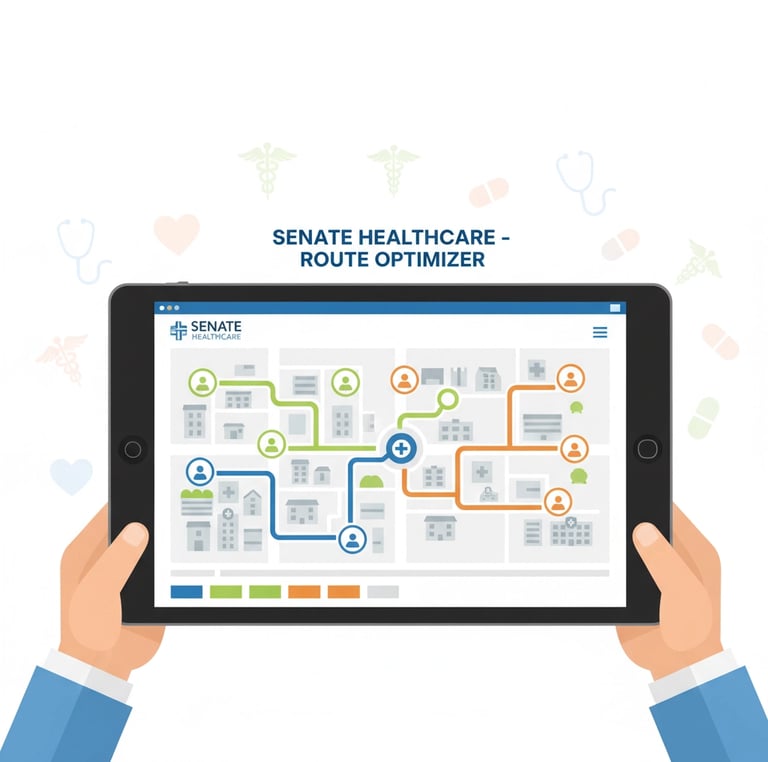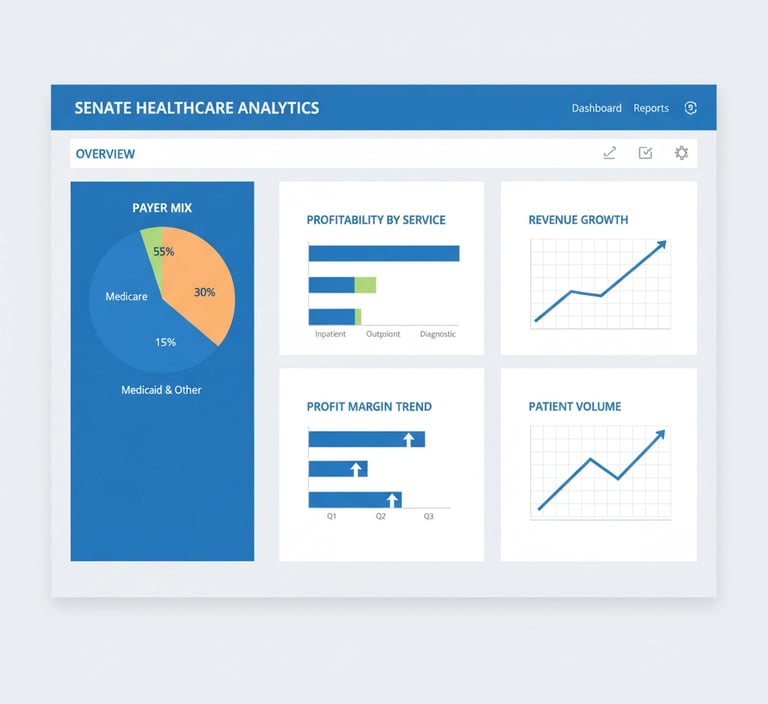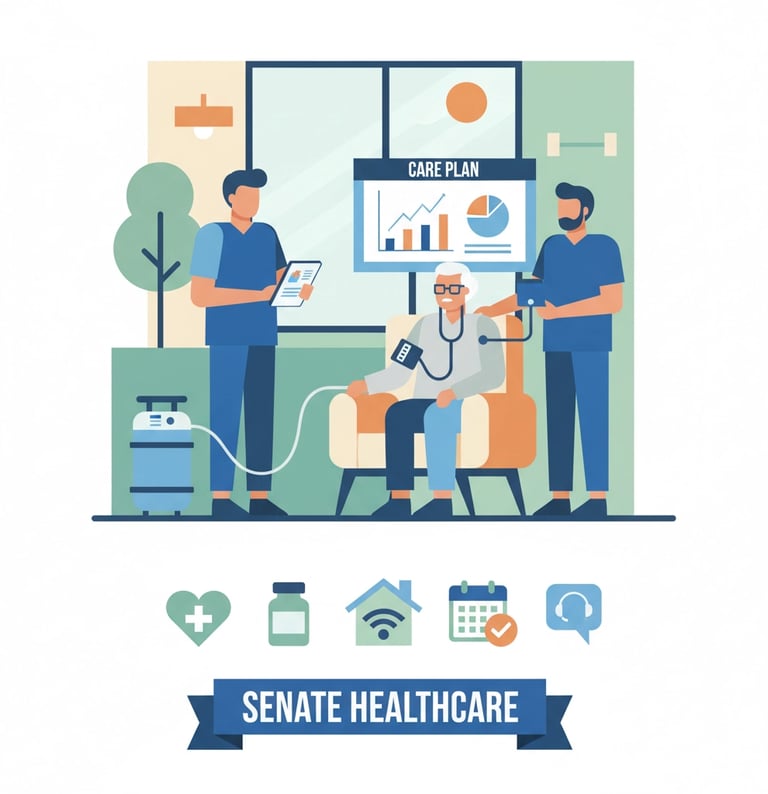Stop Wasting Time on Geographic Expansion: 7 Operational Density Hacks That Actually Boost Your Agency's Value
This comprehensive guide reveals 7 proven operational density strategies that home healthcare agencies can implement to dramatically increase their value and profitability without the risks and costs of geographic expansion. Learn how to optimize your existing operations, boost efficiency, and maximize ROI through strategic operational improvements.
10/9/20255 min read


Stop chasing shiny new markets and start maximizing what you already have. Geographic expansion sounds exciting, but it's often a costly distraction that dilutes your resources and complicates your operations. The smartest home healthcare agencies are focusing on operational density instead, squeezing more value from their existing footprint through strategic optimization.
Here's the reality: while your competitors are burning cash trying to establish themselves in new territories, you can be building an operationally dense powerhouse that delivers superior margins, better patient outcomes, and higher agency valuations.
1. Master Your Patient-to-Clinician Ratios Through Smart Scheduling
The foundation of operational density in home healthcare starts with optimizing your patient-to-clinician ratios. Most agencies operate with suboptimal scheduling that leaves clinicians driving excessive miles between patients or sitting idle between appointments.
Implement geographic clustering strategies that group patients by proximity, not just by clinician availability. Use scheduling software that factors in drive time, traffic patterns, and patient acuity levels. The Centers for Medicare & Medicaid Services reports that agencies with optimized scheduling see 23% better clinician productivity rates.
Focus on building patient density within specific ZIP codes before expanding to new areas. This approach reduces travel time, increases face-to-face patient contact hours, and improves job satisfaction among your clinical staff.


2. Leverage Technology to Eliminate Administrative Waste
Administrative tasks consume up to 40% of your clinical staff's time, according to the National Association for Home Care & Hospice. That's nearly half of your most valuable resource being spent on paperwork instead of patient care.
Deploy comprehensive electronic health record (EHR) systems that integrate with your scheduling, billing, and compliance tracking. Implement mobile documentation tools that allow clinicians to complete notes during patient visits rather than spending hours on paperwork after hours.
Automate routine communications with patients and families through text messaging systems for appointment confirmations, medication reminders, and care plan updates. This reduces phone tag and frees up office staff for revenue-generating activities.
The key is choosing integrated platforms that talk to each other, eliminating the need for duplicate data entry across multiple systems.
3. Build Strategic Payer Mix Optimization
Not all patients are created equal from a profitability standpoint. Operational density means being strategic about your payer mix and focusing resources on the most profitable patient segments.
Analyze your current payer mix to identify which insurance types and patient acuity levels generate the highest margins. Then, develop targeted referral strategies to attract more of these profitable patients. The Medicare Payment Advisory Commission data shows significant variation in reimbursement rates across different patient types and geographic areas.
Consider specializing in specific patient populations where you can command premium rates, such as complex wound care, post-surgical recovery, or chronic disease management. Specialization allows you to develop deep expertise, improve outcomes, and justify higher reimbursement rates.


4. Implement Predictive Analytics for Resource Planning
Instead of reacting to staffing needs, start predicting them. Use historical data and predictive analytics to forecast patient admission patterns, seasonal fluctuations, and staffing requirements.
Track key metrics like average length of stay by diagnosis, readmission rates, and discharge patterns. This data helps you anticipate staffing needs and avoid the costly cycle of emergency hiring and overtime expenses.
The Bureau of Labor Statistics projects 37% growth in home health aide employment through 2031, making strategic workforce planning more critical than ever.
Develop relationships with reliable per diem and contract clinicians before you need them. Having a vetted pool of backup staff prevents service disruptions and maintains operational consistency.
5. Create Centers of Excellence Within Your Existing Territory
Rather than spreading thin across multiple markets, develop specialized programs that become regional magnets for specific types of patients. This approach leverages your existing infrastructure while commanding premium pricing.
Focus on high-acuity, high-reimbursement services like post-acute cardiac care, complex wound management, or neurological rehabilitation. These specializations require minimal additional overhead but generate significantly higher per-visit revenues.
Partner with local hospitals and specialists to become their preferred home health provider for specific patient populations. As discussed in our guide on healthcare partnership strategies, these relationships create sustainable competitive advantages.


6. Optimize Your Revenue Cycle Management
Operational density isn't just about clinical efficiency; it's about financial efficiency too. Streamline your revenue cycle to accelerate cash flow and reduce administrative costs.
Implement real-time eligibility verification to prevent denials before they happen. Use automated prior authorization tools to expedite approvals for services and equipment. The faster you can verify coverage and obtain authorizations, the sooner you can start delivering billable services.
Focus on first-pass claim acceptance rates by investing in coding accuracy and documentation quality. Clean claims get paid faster and require fewer administrative touches. Track your days in accounts receivable and work systematically to reduce collection times.
Consider outsourcing certain revenue cycle functions if they're not core competencies. Sometimes operational density means knowing what not to do in-house.
7. Develop Multi-Service Line Integration
Instead of operating separate silos for home health, hospice, and private duty services, integrate these offerings to maximize patient lifetime value and operational efficiency.
Cross-train staff to work across service lines where appropriate. A nurse who can provide both skilled home health services and private duty care offers tremendous scheduling flexibility and patient continuity.
Develop clinical pathways that seamlessly transition patients between service levels as their needs change. This approach reduces patient churn and maximizes the value of each referral relationship.
The agencies that understand succession planning as a strategic advantage are already thinking about how integrated service delivery affects their valuation multiples.


Making Operational Density Your Competitive Advantage
The home healthcare industry is consolidating rapidly, with larger players acquiring smaller agencies that lack operational sophistication. By focusing on operational density instead of geographic expansion, you're building the kind of efficient, profitable operation that commands premium valuations.
Track key performance indicators like cost per visit, clinician productivity rates, patient satisfaction scores, and profit margins by service line. These metrics tell the story of operational density and demonstrate value to potential acquirers or investors.
Remember, operational density isn't about working your staff harder; it's about working smarter. When you optimize operations effectively, everyone wins: patients receive better care, staff experience less stress and better job satisfaction, and owners see improved profitability and agency value.
For agencies considering their exit strategy options, operational density becomes a key value driver that separates premium acquisitions from distressed sales.
The most successful home healthcare agencies of the next decade won't be the biggest ones; they'll be the most operationally dense ones. Start building yours today.
Unlock Your 30-Minute Agency Succession Review
Maybe you're ready to expand your reach, or perhaps it's time to consider your legacy and the future of your business. Either way, it all begins with a conversation. Schedule a confidential, no-obligation call to explore what the future might hold for you and your business.
Complete the form, and we'll reach out for a chat...


© 2025 SENATE HEALTHCARE LLC.
ALL RIGHTS RESERVED


